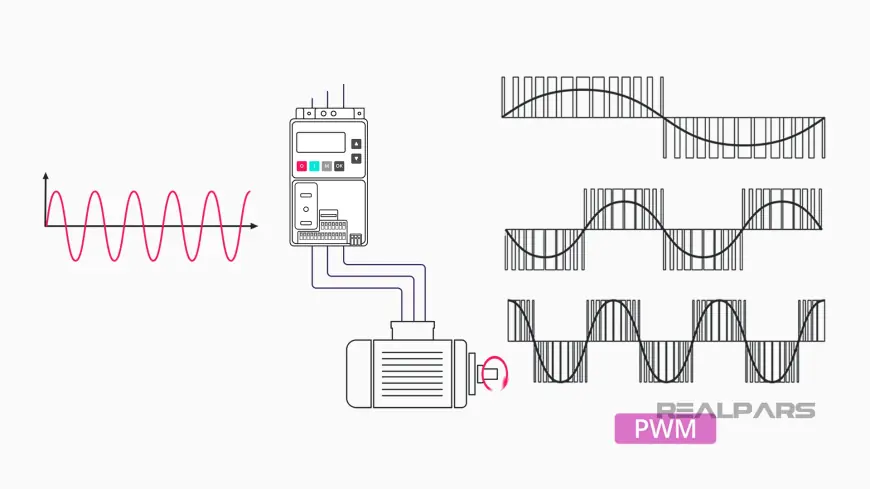Variable Frequency Drive (VFD) Market Overview Highlighting Industrial Adoption, Technological Advancements, Efficiency, and Global Growth Potential
The Variable Frequency Drive (VFD) market overview examines industrial adoption, technological innovations, energy efficiency, and global growth potential. VFDs play a crucial role in motor control, automation, and sustainable operations across various sectors worldwide.

The Variable Frequency Drive (VFD) market has emerged as a critical component in modern industrial and commercial operations. VFDs regulate motor speed and torque, improving energy efficiency, reducing operational costs, and enhancing process control. This overview provides a comprehensive understanding of the market, including its growth drivers, technological developments, sector-specific applications, and regional dynamics.
Understanding VFDs
Variable Frequency Drives are devices used to control the speed and torque of electric motors by adjusting voltage and frequency. They are widely used in industrial machinery, HVAC systems, water treatment, manufacturing lines, and renewable energy applications. VFDs not only reduce energy consumption but also improve equipment lifespan, reduce wear and tear, and allow precise process control.
Key Market Drivers
-
Energy Efficiency Initiatives: Rising electricity costs and sustainability mandates drive the adoption of VFDs to minimize energy consumption.
-
Industrial Automation: Smart factories and Industry 4.0 initiatives rely on VFDs for precise motor control and enhanced productivity.
-
Infrastructure and Urbanization: Expanding construction, water treatment, and building projects increase VFD demand in HVAC and pumping systems.
-
Renewable Energy Integration: VFDs play a crucial role in optimizing wind, solar, and hydroelectric systems for improved performance and grid stability.
-
Operational Cost Reduction: VFDs help industries achieve long-term savings through energy optimization and reduced maintenance requirements.
Technological Developments
The VFD market is shaped by continuous technological advancements:
-
IoT and Cloud Connectivity: Enables remote monitoring, predictive maintenance, and real-time operational insights.
-
AI-Integrated Systems: Optimize energy consumption, enhance fault detection, and improve process efficiency.
-
Compact and Modular Designs: Facilitate easy installation and sector-specific customization.
-
Harmonics Mitigation: Improves power quality and protects sensitive equipment.
-
Enhanced Cybersecurity: Ensures safe operations in connected industrial systems.
Sector-Specific Applications
-
Manufacturing: VFDs enhance automation, precision, and energy efficiency on production lines.
-
HVAC Systems: Adoption of energy-saving drives in commercial and residential buildings supports sustainable infrastructure.
-
Oil & Gas: High-performance VFDs optimize pumps, compressors, and conveyors for reliability and efficiency.
-
Water & Wastewater Treatment: Efficient pump control reduces energy consumption and operational costs.
-
Transportation & Electric Vehicles: VFDs support electrification, including charging infrastructure and electric mobility systems.
Regional Overview
-
North America: Demand driven by automation, smart factories, and regulatory energy efficiency compliance.
-
Europe: Adoption is supported by sustainability policies, green initiatives, and strict energy regulations.
-
Asia-Pacific: Rapid industrialization, urban growth, and government-backed efficiency programs make this the fastest-growing region.
-
Middle East & Africa: Infrastructure, oil & gas, and industrial projects increase VFD adoption.
Market Challenges
Despite strong growth, the VFD market faces challenges:
-
High Initial Investment: May limit adoption among small and medium-sized enterprises.
-
Integration Complexity: Retrofitting existing systems can be resource-intensive.
-
Skill Gaps: Lack of trained personnel for installation and maintenance may slow deployment.
-
Cybersecurity Risks: Connected systems require robust protection against digital threats.
Future Outlook
The VFD market is poised for continued expansion due to growing energy efficiency requirements, digitalization, and sustainable industrial practices. Advancements in AI, IoT, modular designs, and renewable energy integration will define next-generation VFD solutions. Companies focusing on innovation, regional penetration, and sector-specific solutions will lead market growth.
Conclusion
The Variable Frequency Drive (VFD) market overview highlights its importance in energy efficiency, industrial automation, and sustainable operations. With technological advancements, increasing adoption across sectors, and global demand growth, VFDs are set to remain central to modern industrial and commercial applications worldwide.
What's Your Reaction?
 Like
0
Like
0
 Dislike
0
Dislike
0
 Love
0
Love
0
 Funny
0
Funny
0
 Angry
0
Angry
0
 Sad
0
Sad
0
 Wow
0
Wow
0


























































